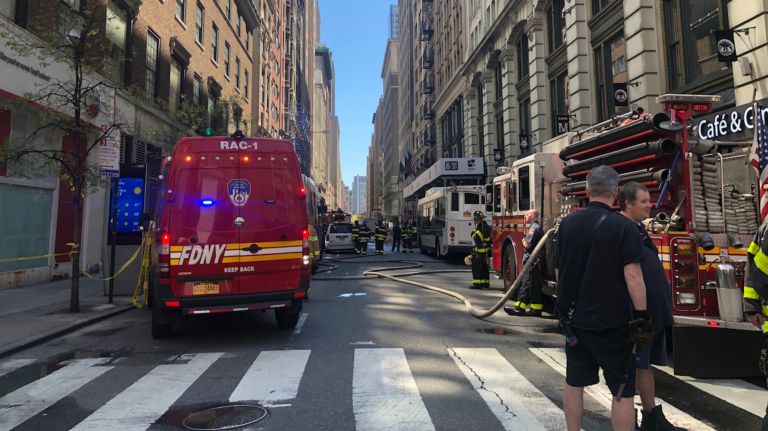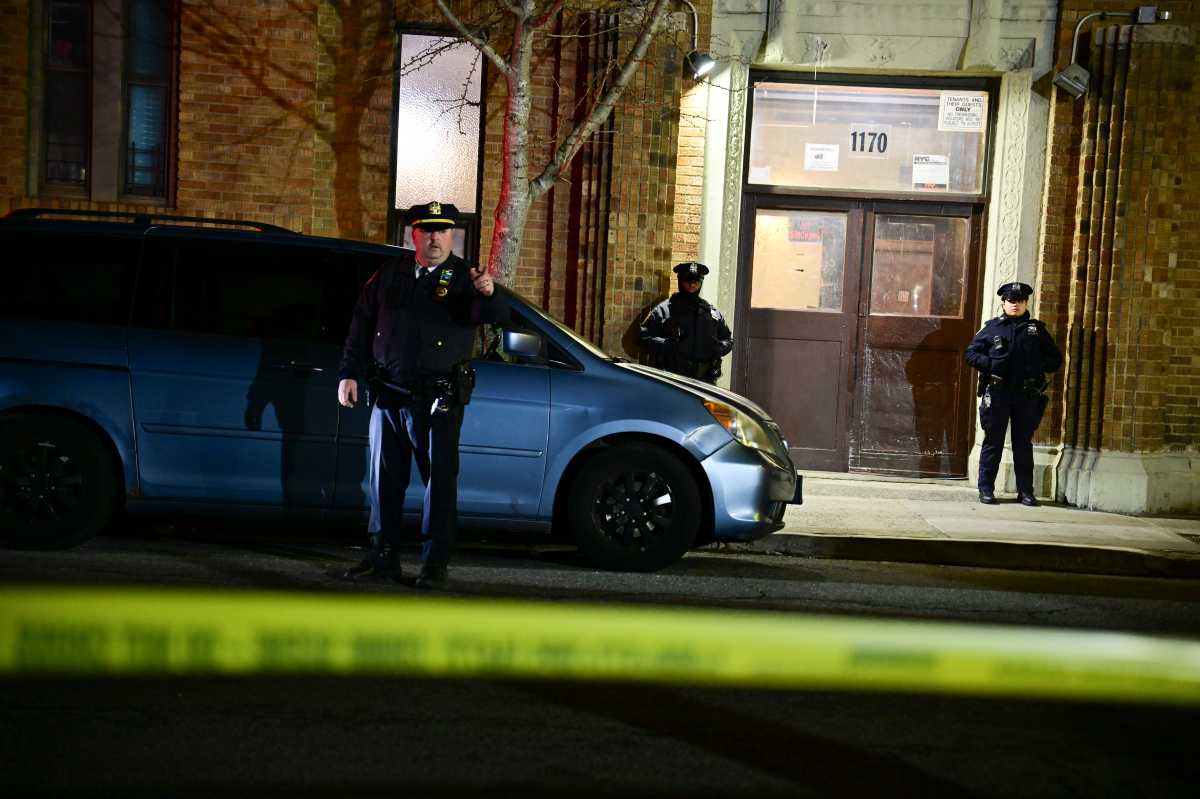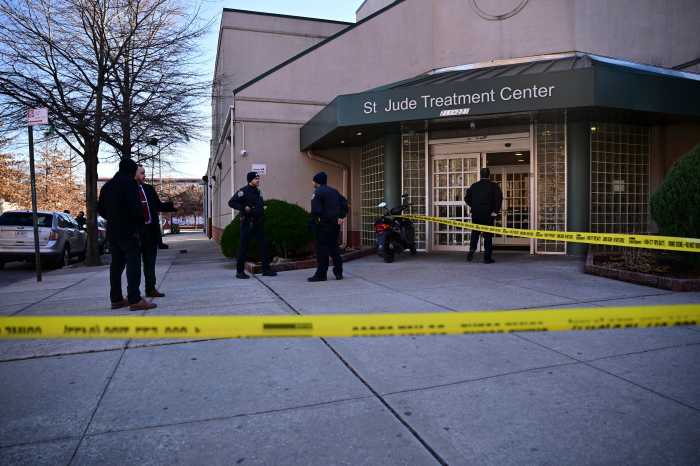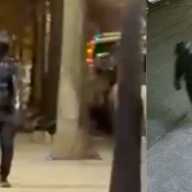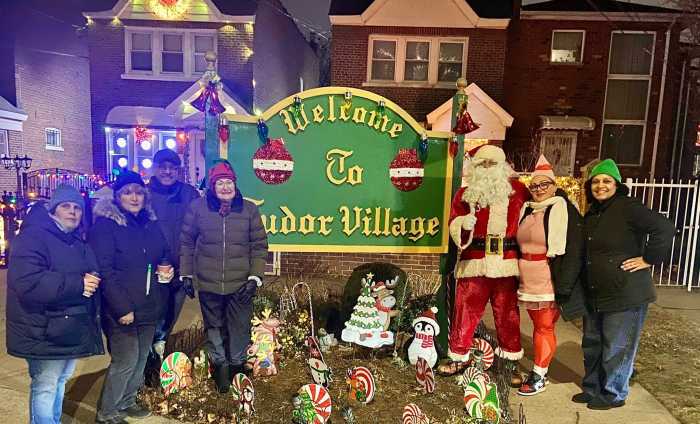
Six people were injured and several evacuations were ordered Wednesday following a series of manhole fires that sparked a small explosion in the cellar of a building in midtown, the FDNY said.
The explosion rattled 6 E. 32nd St., between Fifth and Madison Avenues, around 11 a.m., according to fire officials. Firefighters had been on the scene for just over an hour, battling the manhole fires and testing the air for toxins, when the explosion occurred, FDNY Deputy Assistant Chief Michael Ajello said.
The fires were brought under control just before 4:20 p.m., according to the FDNY.
"[We] began to do our examination of the surrounding buildings for carbon monoxide, natural gas … While conducting that investigation, a small flash smoke explosion happened in that same address," Ajello said of the blast.
It’s believed that the manhole fires and a buildup of carbon monoxide contributed to the explosion, an FDNY spokesman said.
“There’s a point of entry for the electrical service underground, which is in a metal conduit, which brings the electric into the building," Ajello explained. "The products of combustion from that fire also entered through that point."
Parth Shah, 22, was working at a newsstand on Fifth Avenue near the corner of 32nd Street when he said he suddenly heard "only the blast — boom!"
Five firefighters and a building superintendent from 6 E. 32nd St. suffered injuries that were not life-threatening, per the FDNY.
Two buildings — 16 32nd St. and 12 32nd St. — were evacuated as a precaution, according to Ajello and another fire official. Investigators believe the fire, which affected four or five manholes, started in Con Edison wiring and infrastructure under the roadway.
"The carbon monoxide levels were high… and now we have them back way down," Ajello added.



